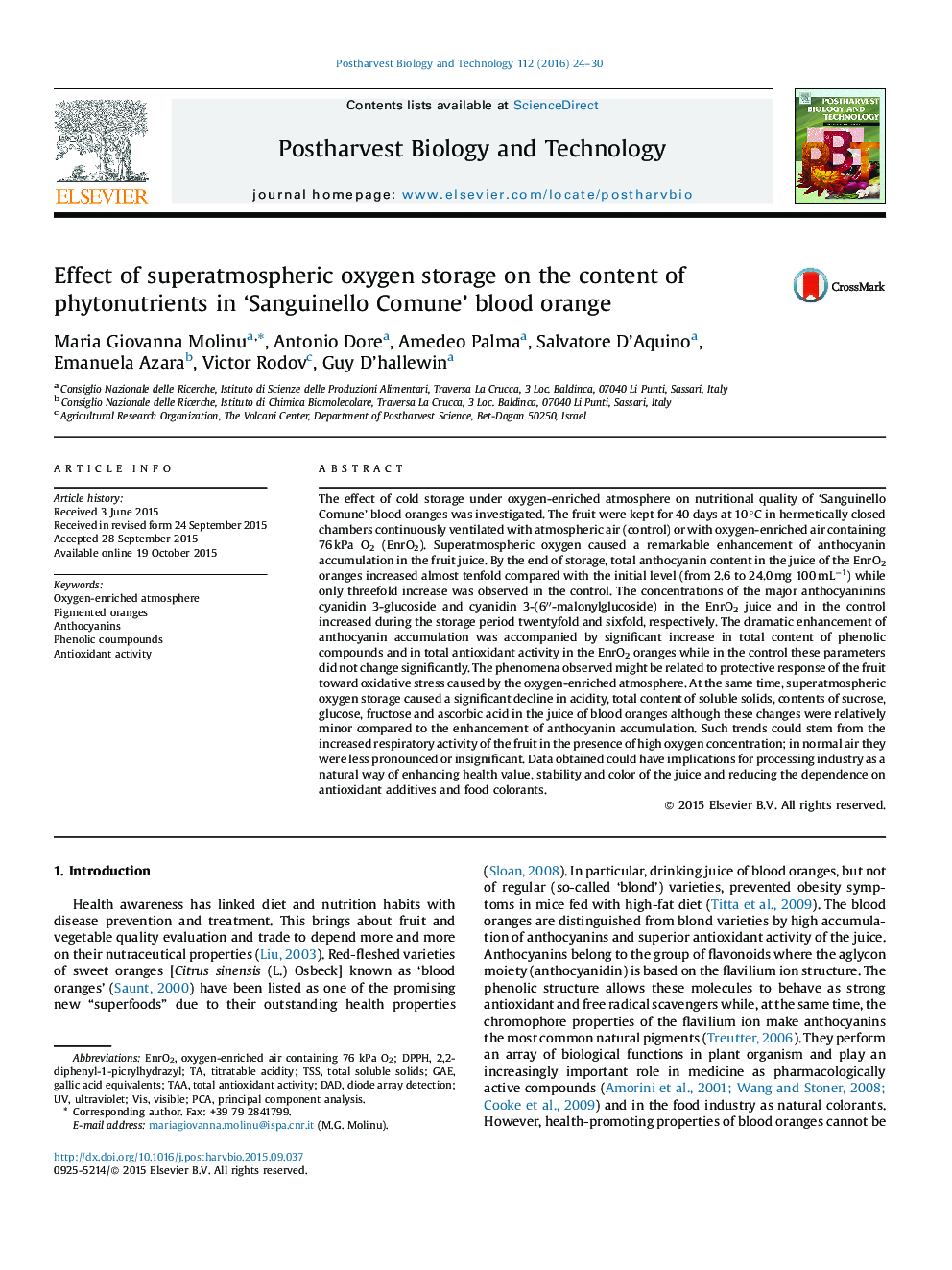| Article ID | Journal | Published Year | Pages | File Type |
|---|---|---|---|---|
| 4517919 | Postharvest Biology and Technology | 2016 | 7 Pages |
•Superatmospheric oxygen storage (76 kPa O2) caused a remarkable enhancement of nutraceutical properties in blood orange.•Superatmospheric oxygen storage increased total anthocyanin content in the juice of blood oranges almost tenfold compared with the initial level.•Superatmospheric oxygen storage increased total phenolic content and in total antioxidant activity in the juice of blood oranges.
The effect of cold storage under oxygen-enriched atmosphere on nutritional quality of ‘Sanguinello Comune’ blood oranges was investigated. The fruit were kept for 40 days at 10 °C in hermetically closed chambers continuously ventilated with atmospheric air (control) or with oxygen-enriched air containing 76 kPa O2 (EnrO2). Superatmospheric oxygen caused a remarkable enhancement of anthocyanin accumulation in the fruit juice. By the end of storage, total anthocyanin content in the juice of the EnrO2 oranges increased almost tenfold compared with the initial level (from 2.6 to 24.0 mg 100 mL−1) while only threefold increase was observed in the control. The concentrations of the major anthocyaninins cyanidin 3-glucoside and cyanidin 3-(6″-malonylglucoside) in the EnrO2 juice and in the control increased during the storage period twentyfold and sixfold, respectively. The dramatic enhancement of anthocyanin accumulation was accompanied by significant increase in total content of phenolic compounds and in total antioxidant activity in the EnrO2 oranges while in the control these parameters did not change significantly. The phenomena observed might be related to protective response of the fruit toward oxidative stress caused by the oxygen-enriched atmosphere. At the same time, superatmospheric oxygen storage caused a significant decline in acidity, total content of soluble solids, contents of sucrose, glucose, fructose and ascorbic acid in the juice of blood oranges although these changes were relatively minor compared to the enhancement of anthocyanin accumulation. Such trends could stem from the increased respiratory activity of the fruit in the presence of high oxygen concentration; in normal air they were less pronounced or insignificant. Data obtained could have implications for processing industry as a natural way of enhancing health value, stability and color of the juice and reducing the dependence on antioxidant additives and food colorants.
Graphical abstractFigure optionsDownload full-size imageDownload as PowerPoint slide
